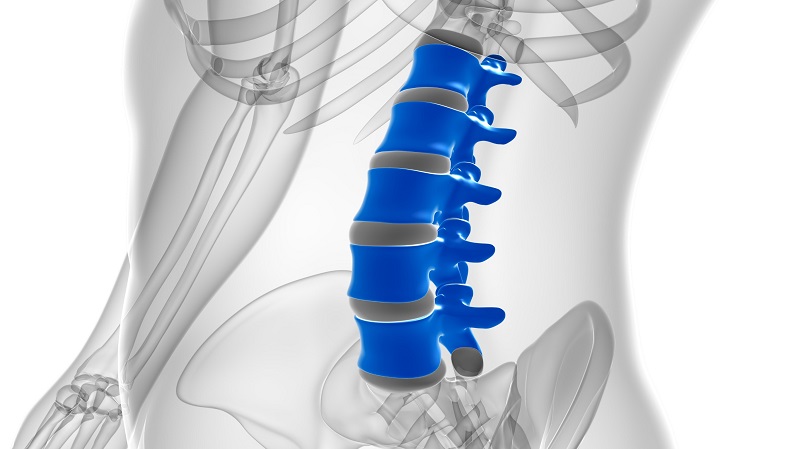Tiny Wraparound Electronic Implants to Revolutionize Treatment of Spinal Cord Injuries
|
By HospiMedica International staff writers Posted on 10 May 2024 |

The spinal cord functions as a vital conduit, transmitting nerve impulses to and from the brain, much like a highway. When the spinal cord is damaged, this flow of information is disrupted, leading to severe disabilities, including the irreversible loss of sensory and motor functions. Traditional methods for treating spinal injuries typically involve inserting electrodes into the spinal cord and implanting devices in the brain, both of which are procedures with high risks. Now, a tiny, flexible electronic device that wraps around the spinal cord offers a potentially safer alternative for treating spinal injuries.
The novel device developed by a team of engineers, neuroscientists, and surgeons from the University of Cambridge (Cambridge, UK) was utilized to capture nerve signals transmitted between the brain and the spinal cord. In contrast to existing technologies, the Cambridge device can record 360-degree information of the spinal cord, providing a comprehensive view of its activity. Drawing on advances in microelectronics, the team devised a method to access data across the entire spinal cord by wrapping very thin, high-resolution implants around the spinal cord’s circumference. This breakthrough marks the first successful attempt at safe, 360-degree monitoring of the spinal cord, a significant improvement over previous methods that involved piercing the spinal cord with electrodes, which posed a risk of injury.
Developed using sophisticated photolithography and thin film deposition, the Cambridge devices are biocompatible and extremely thin, measuring just a few millionths of a meter in thickness, and they operate on minimal power. These devices function by intercepting signals from the axons or nerve fibers within the spinal cord, enabling precise recording of these signals. Due to their slim profile, the devices can perform this function without harming the nerve tissues, as they do not penetrate the spinal cord. The devices were inserted using a modified standard surgical procedure, allowing them to be positioned beneath the spinal cord without causing any damage. In experimental trials involving rats, the devices were effectively used to initiate limb movement and demonstrated very low latency, comparable to human reflexive responses. Further testing with human cadaver models confirmed that these devices could be successfully implanted in humans.
The researchers believe their approach could significantly change the treatment of spinal injuries in the future. While current treatments often require implants in both the brain and spinal cord, the Cambridge team suggests that brain implants might not be necessary. Although a definitive treatment for spinal injuries may still be several years away, these devices could soon provide valuable insights for researchers and surgeons, offering a non-invasive method to study a critical yet underexplored part of human anatomy. The Cambridge team is currently planning further applications of the devices, aiming to monitor nerve activity in the spinal cord during surgical procedures.
“It’s been almost impossible to study the whole of the spinal cord directly in a human, because it’s so delicate and complex,” said Dr. Damiano Barone from the Department of Clinical Neurosciences, who co-led the research. “Monitoring during surgery will help us to understand the spinal cord better without damaging it, which in turn will help us develop better therapies for conditions like chronic pain, hypertension or inflammation. This approach shows enormous potential for helping patients.”
Related Links:
University of Cambridge
Latest Surgical Techniques News
- DNA Origami Improves Imaging of Dense Pancreatic Tissue for Cancer Detection and Treatment
- Pioneering Sutureless Coronary Bypass Technology to Eliminate Open-Chest Procedures
- Intravascular Imaging for Guiding Stent Implantation Ensures Safer Stenting Procedures
- World's First AI Surgical Guidance Platform Allows Surgeons to Measure Success in Real-Time
- AI-Generated Synthetic Scarred Hearts Aid Atrial Fibrillation Treatment
- New Class of Bioadhesives to Connect Human Tissues to Long-Term Medical Implants
- New Transcatheter Valve Found Safe and Effective for Treating Aortic Regurgitation
- Minimally Invasive Valve Repair Reduces Hospitalizations in Severe Tricuspid Regurgitation Patients
- Tiny Robotic Tools Powered by Magnetic Fields to Enable Minimally Invasive Brain Surgery
- Magnetic Tweezers Make Robotic Surgery Safer and More Precise
- AI-Powered Surgical Planning Tool Improves Pre-Op Planning
- Novel Sensing System Restores Missing Sense of Touch in Minimally Invasive Surgery
- Headset-Based AR Navigation System Improves EVD Placement
- Higher Electrode Density Improves Epilepsy Surgery by Pinpointing Where Seizures Begin
- Open-Source Tool Optimizes Placement of Visual Brain Implants
- Easy-To-Apply Gel Could Prevent Formation of Post-Surgical Abdominal Adhesions
Channels
Critical Care
view channel
Breakthrough AI Technology Accurately Assesses Heart Failure Severity
Heart failure (HF) is a complex condition where the heart cannot effectively pump blood to meet the body’s needs due to underlying medical issues. It is marked by recurring episodes and frequent hospitalizations.... Read more
New Approach to Visualizing Blood Pressure Data Can Help Better Manage Hypertension Patients
Sometimes, a patient’s blood pressure may be elevated in a doctor's office but normal at home, a phenomenon known as white coat hypertension. It is estimated that 10% to 20% of high blood pressure diagnoses... Read morePatient Care
view channel
Portable Biosensor Platform to Reduce Hospital-Acquired Infections
Approximately 4 million patients in the European Union acquire healthcare-associated infections (HAIs) or nosocomial infections each year, with around 37,000 deaths directly resulting from these infections,... Read moreFirst-Of-Its-Kind Portable Germicidal Light Technology Disinfects High-Touch Clinical Surfaces in Seconds
Reducing healthcare-acquired infections (HAIs) remains a pressing issue within global healthcare systems. In the United States alone, 1.7 million patients contract HAIs annually, leading to approximately... Read more
Surgical Capacity Optimization Solution Helps Hospitals Boost OR Utilization
An innovative solution has the capability to transform surgical capacity utilization by targeting the root cause of surgical block time inefficiencies. Fujitsu Limited’s (Tokyo, Japan) Surgical Capacity... Read more
Game-Changing Innovation in Surgical Instrument Sterilization Significantly Improves OR Throughput
A groundbreaking innovation enables hospitals to significantly improve instrument processing time and throughput in operating rooms (ORs) and sterile processing departments. Turbett Surgical, Inc.... Read moreHealth IT
view channel
Printable Molecule-Selective Nanoparticles Enable Mass Production of Wearable Biosensors
The future of medicine is likely to focus on the personalization of healthcare—understanding exactly what an individual requires and delivering the appropriate combination of nutrients, metabolites, and... Read more
Smartwatches Could Detect Congestive Heart Failure
Diagnosing congestive heart failure (CHF) typically requires expensive and time-consuming imaging techniques like echocardiography, also known as cardiac ultrasound. Previously, detecting CHF by analyzing... Read moreBusiness
view channel
Expanded Collaboration to Transform OR Technology Through AI and Automation
The expansion of an existing collaboration between three leading companies aims to develop artificial intelligence (AI)-driven solutions for smart operating rooms with sophisticated monitoring and automation.... Read more

















